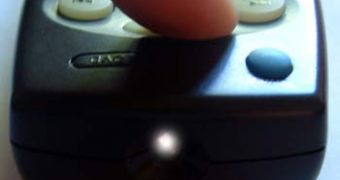Remote controls were first developed during World War I by the German military to crash naval vessels into Allied ships, while World War II saw the arrival of the first bomb detonated with the help of a remote control. Both types were operating in the radio frequencies of the electromagnetic spectrum, however theoretically a remote control could work in all the wavelengths of light. Today, we can find remote controls mostly anywhere; you can't turn on the TV without one, control the volume of the stereo or even program the air conditioning unit.
Remote controls have the role of relaying a message wirelessly. For example, the typical remote controls today, working in the infrared frequency of the electromagnetic spectrum, fire a beam of infrared light towards a receiver which interprets the message and executes a certain task.
Infrared remote controls are relatively simple. They consist of a simple electronic circuit which is composed of four major components: the buttons, the integrated circuit, button contacts and a light-emitting diode working in the infrared wavelength.
When the contacts of the buttons are closed, the integrated circuit detects a change in electrical resistance, decides which button was pushed and sends an electrical signal corresponding to the respective button to the light-emitting diode. The LED converts these electrical signals into a beam of invisible infrared light, and sends it to the receiver.
The receiver detects the light signal with the help of a photo diode and sends it to its own integrated circuit to process it and determine what action to take.
You might have noticed that with the help of a digital camera you can actually see the infrared beam of light originating from the LED of the remote control; that's because the sensor of the camera is much more sensitive than the human eye. Also, the beam of light is emitted into a pulsing pattern. In fact, the shape of the signal is due to the fact that the remote encodes the message in the binary code, to make it easy for the receiver to decode and understand it.
The signal is always sent into a 7-bit binary command. Thus, when you push the number '1' button, the remote will most likely - remote control encodings are not standard - produce a light signal corresponding to the code '000 0000', the number '2' button '000 0001' and so on. Infrared remote controls have a range of 10 meters and require that the light signal sent by the remote be directed towards the device it is commanding.
Interference is usually low and comes from sources such as sunlight, fluorescent bulbs and even the human body. Most receivers imply the use of light filters to avoid such disadvantages, however 980 nanometers infrared light may still escape filtering and confuse the receiver.

 14 DAY TRIAL //
14 DAY TRIAL //